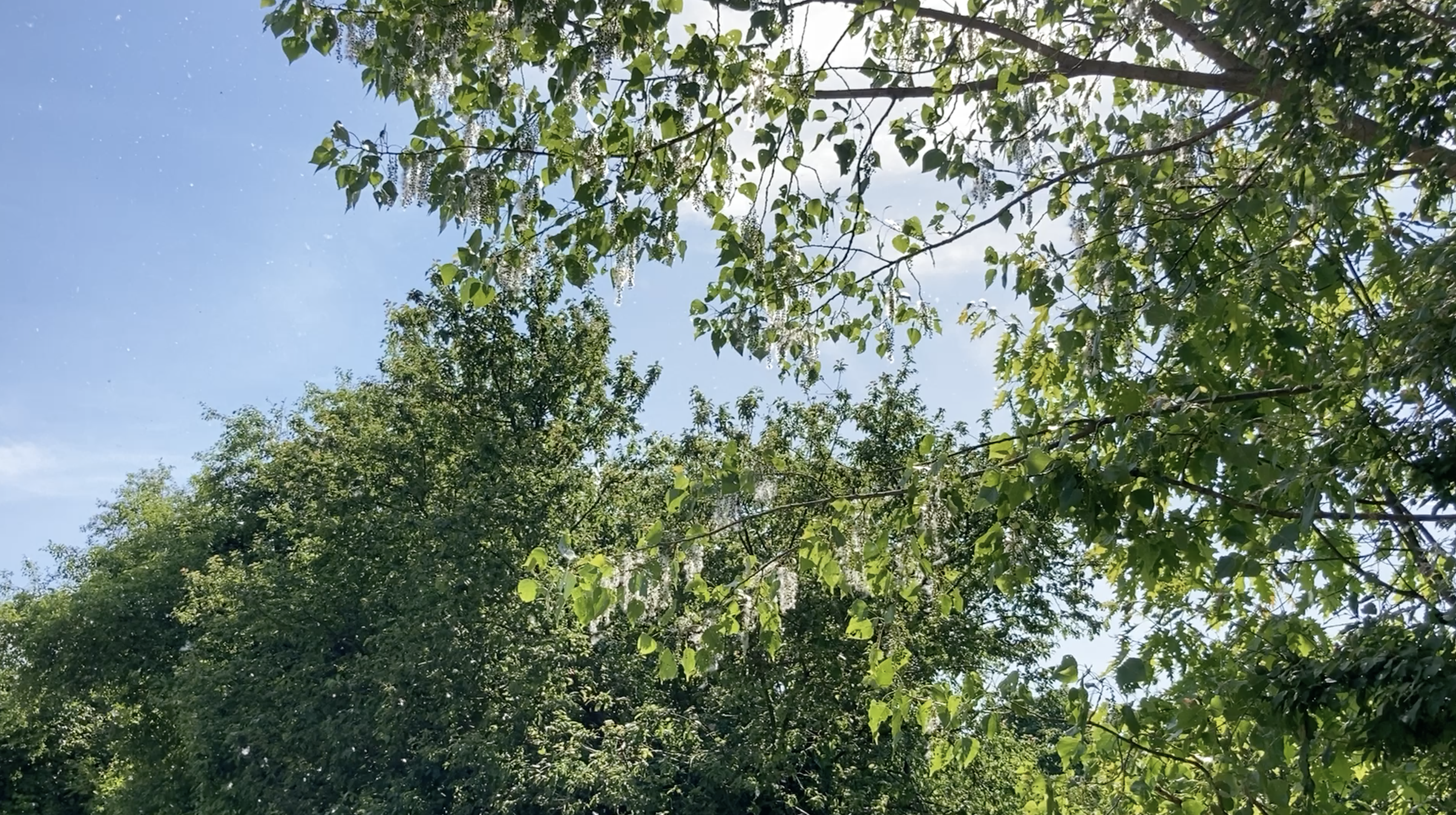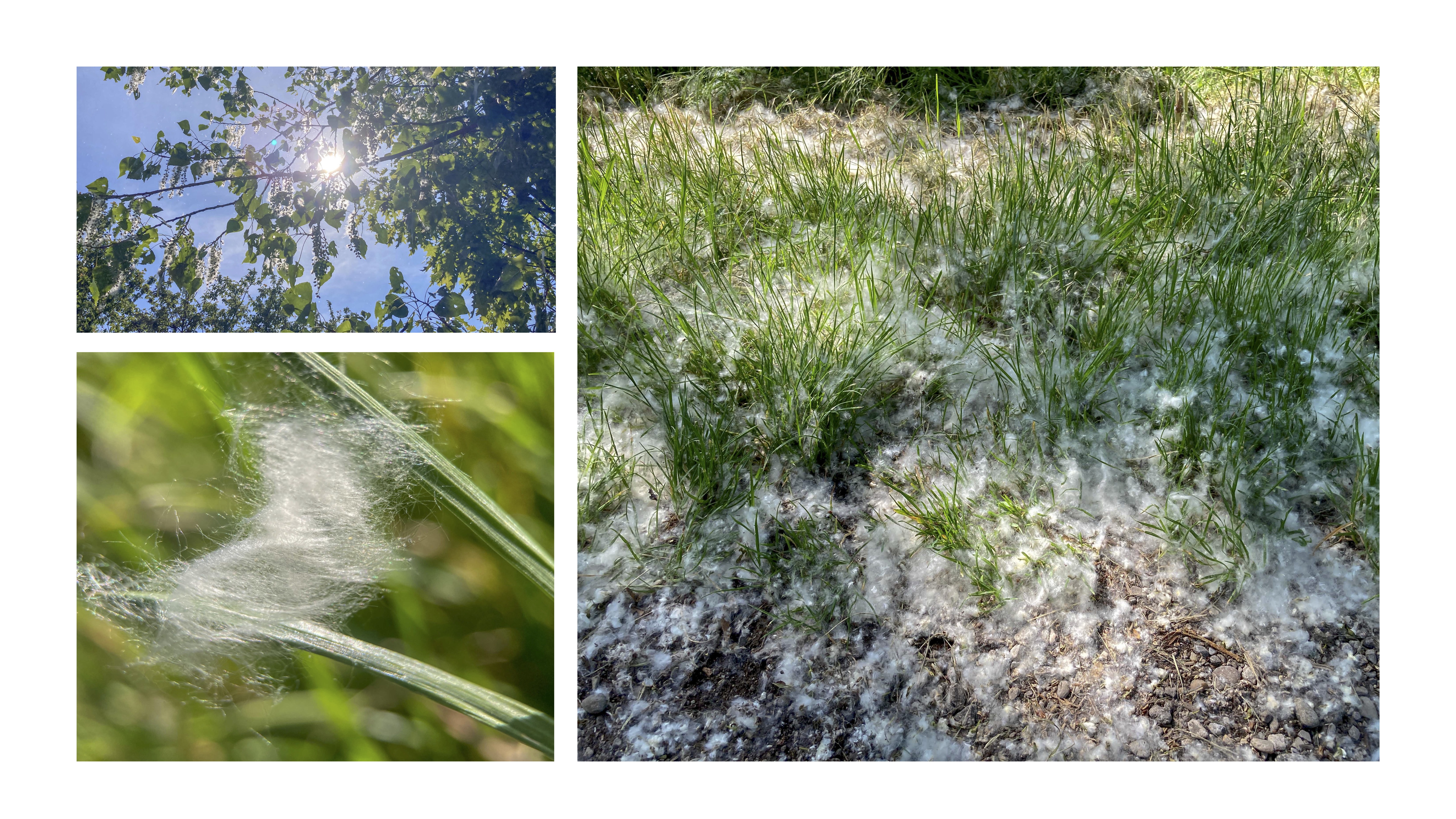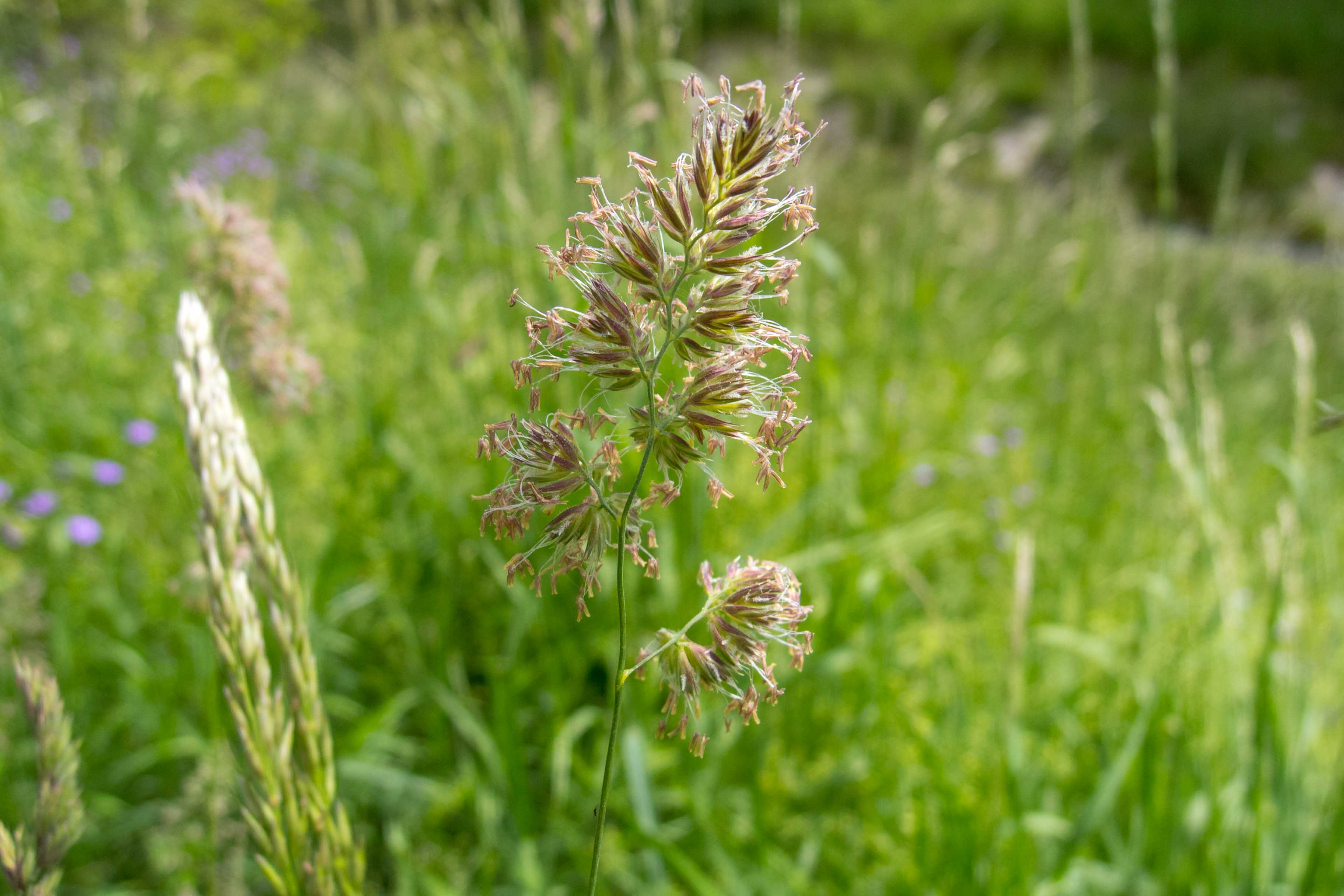We provide here pollen forecasts and recommendations, that are based on our scientifically evaluated data and our expertise. It is our aim to inform persons concerned by pollen allergies in Vienna in a most comprehensive, accurate way and free of charge.
Video Highlight: poplar cotton wool during the grass pollen season 2024

After activation, data will be sent to YouTube. Further information here: Data protection
Poplar cotton wool is a combination of seed hairs and threads of poplar. It is often determined wrong as pollen. Here you can see a fruiting poplar that is releasing its seeds as white flakes in the air.
Current pollination
LEGEND
Due to current cause:

Currently there is a lot of poplar cotton wool on the move, which can be found as white flakes in the air or on the ground. Poplar cotton wool is the seed hairs and seed threads of the poplar tree and is completely harmless. These flakes are not pollen and do not contain allergenic proteins, hence they are hypoallergenic. Poplar seed hairs and seed threads can even filter pollen from allergenic plants, such as grass pollen, from the air. Poplar pollen is usually found in the air from February to early April and is no longer responsible for allergic reactions at this time of year. However, the poplar seed hairs and seed threads usually occur together with the grass pollen season and the symptoms are therefore often incorrectly attributed to the white flakes.

Photo: One of the most important grass species relevant to allergies is still in full flower: flowering orchard grass (left), flowering spikelets of orchard grass in detail (right).
Mid- and long-term forecast for Vienna
This forecast gives you an overview for a longer time period so that you can improve your planning.
Grass pollen levels have reached high values, but unsettled weather is expected to decrease them again!
The main pollination period of grasses has now arrived with corresponding pollen levels in Vienna. High pollen concentrations have already been observed by midweek. The approaching low-pressure system ist expected to bring widespread precipitation and thunderstorms across the entire country, which will significantly reduce pollen levels in Vienna. The situation will remain unstable over the Pentecost weekend, so high pollen levels are not expected in the coming days. Many allergologically relevant grass species are currently in bloom, contributing to a mix of grass pollen in the air. Orchard grass, false-oat grass and the fescue grasses are still in their main pollination period. Several species of brome grass are also flowering in Vienna.
Moreover, cereal crops such as cultivated-rye and wheat are in flower and can release pollen. All cereal crops belong to the sweet grass family and can exacerbate symptoms of grass pollen allergies, especially on the outskirts of the city or during trips near flowering fields.
Dock and plantain are flowering in Vienna’s meadows as well. Higher pollen concentrations have to be expected especially near unmown sections of meadows.
First pollen of the nettle family has been recorded in our pollen trap, but has not reached higher concentrations yet.
The time for the release of fungal spores is also starting. Moderate concentrations can already be reached under favorable weather conditions. Currently, spores from the genera Cladosporium and Alternaria are present in the Vienna pollen trap.
Pollination profile
Grasses:
- state of the flower: main flower/pollination
- trend: increasing
- time of the start of the flower: earlier than average
The usual times of pollination can be found in our pollen calendars.
Tip of the season:
Not every person affected by grass pollen allergy reacts equally to every flowering grass during the season. The pollen calendars of the Pollenservice Vienna list the most allergologically important grass species and their pollination periods. This calendar is based on field observations and is specifically tailored to the Vienna region.
Pollen spectrum:
Pollen of mulberry tree, elderberry, spruce, pine, vine and linden occur as well.
Current main allergen: Grasses

Grass pollen allergy is the most prevalent pollen allergy in Vienna!
Pollination time in Vienna: April to September; decorative grasses extend the pollination time into autumn!
Occurrence in Vienna: The sweet grass family (Poaceae) is prevalent and found nearly everywhere. Natural monuments, parks, the banks of the Danube and obviously all areas (meadows/lawns), that are mowed infrequently, are hot spots.
Who are “the grasses“?
There are many genera and species of relevance for persons concerned, especially because reactions to different taxa of the family are individual. Those grasses, that are of highest relevance for a grass pollen allergy, are mentioned in the following.
Bluegrass (Poa pratensis): flowers from April to June. It is sowed frequently for lawns and pastures.
Orchard grass (Dactylis glomerata): flowers from May to June. It occurs frequently (especially on meadows, roadsides, ruderal areas).
Falseoat-grass (Arrhenatherum elatius): flowers from May to July. Falseoat-grass prefers pastures and clearings.
Fescue grass (Festuca sp.): flowers from May to July. This genus is species-rich and prefers marshes like fine lawns, but also alluvial forests and roadsides.
Perennial rye grass (Lolium perenne): flowers from June to July. Perennial rye grass grows frequently on meadows and pastures and is used as pasture grass.
Timothy grass (Phleum pratense): flowers from June to September. Timothy grass is an allergologically famous gras but plays a minor role in Vienna due to its infrequent distribution. It prefers natural areas.
Bermuda grass (Cynodon dactylon): flowers from July to August. Bermuda grass is a neophyte in Europa and a light and heat indicator.
Cereals (cultivated rye, wheat and maize): Cereals belong as well to the sweet grass family. Grain fields in vicinity of Vienna may cause locally increased pollination, although cereal pollen is in general larger and thus not transported as far. Cultivated rye flowers usually from May to June, wheat from June to July and maize from July to August.
Cross-reactivity to pollen of other plants: Grass pollen is highly cross-reactive among pollen of other grasses
The GeoSphere Austria is our partner for weather forecasts and weather data. We are grateful for the professional interchange and the cooperation.